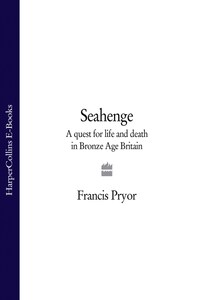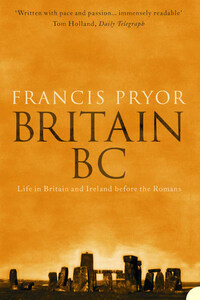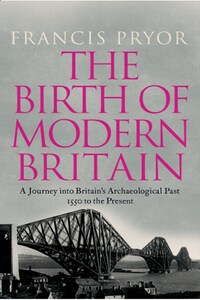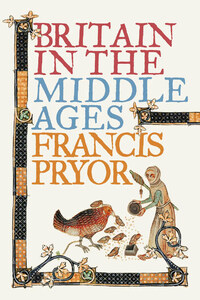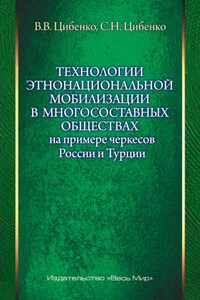HarperPress
An imprint of HarperCollinsPublishers Ltd. 1 London Bridge Street London SE1 9GF
www.harpercollins.co.uk
Copyright © Francis Pryor 2001
Francis Pryor asserts the moral right to be identified as the author of this work
A catalogue record for this book is available from the British Library
Maps and diagrams by Leslie Robinson and Rex Nicholls
All rights reserved under International and Pan-American Copyright Conventions. By payment of the required fees, you have been granted the non-exclusive, non-transferable right to access and read the text of this ebook on-screen. No part of this text may be reproduced, transmitted, down-loaded, decompiled, reverse engineered, or stored in or introduced into any information storage and retrieval system, in any form or by any means, whether electronic or mechanical, now known or hereinafter invented, without the express written permission of HarperCollins ebooks
HarperCollinsPublishers has made every reasonable effort to ensure that any picture content and written content in this ebook has been included or removed in accordance with the contractual and technological constraints in operation at the time of publication
Source ISBN: 9780007101924
Ebook Edition © JUNE 2012 ISBN: 9780007380824
Version: 2016-09-15
(Unless otherwise stated, all photographs are from the author’s collection)
PLATES SECTION 1
The prehistoric landscape at Fengate, Peterborough. The Bronze Age fields were used by livestock farmers between 2500 and 1000 BC.
Unexcavated Bronze Age droveway ditches at Fengate, showing on the stripped gravel surface as dark marks.
The bank that ran alongside a Bronze Age ditch at Fengate was preserved beneath upcast from a modern drainage dyke.
A minor Bronze Age double-ditched droveway being excavated at Fengate.
Body of a young man buried at Fengate sometime between 3500 and 3000 BC.
Gold objects from Barrow G.8 at Wilsford, Wiltshire (2000–1800 BC). (Wiltshire Archaeological and Natural History Society)
Gold grave-goods from a barrow at Little Cressingham, Norfolk (2000–1800 BC). (Norfolk Museums and Archaeology Service)
Sheet-gold cape found at Mold, Flintshire, Wales in 1833. It covered a body which lay under a cairn in a gravel pit (2000–1800 BC). (British Museum)
The Carnac alignments, erected near the coast in Brittany during the Late Neolithic period, around 3500 to 2500 BC (The Ancient Art & Architecture Collection)
The aerial photograph which first revealed the faint cropmarks of the Etton causewayed enclosure (3800 BC). (Photo: S.J. Upex)
Corn-grinding stone, or quern, buried on-edge in the Neolithic causewayed enclosure at Etton (3800 BC).
Aerial photograph taken by J.K. St Joseph in July 1951, showing cropmarks south of Maxey church, Cambridgeshire. (© Crown Copyright 1951/MOD. Reproduced with the permission of the Controller of Her Majesty’s Stationery Office)
The immediate effects of de-watering on waterlogged Neolithic wood (3800 BC) at Etton.
The base of a Bronze Age notched log ladder (1000 BC) found at the bottom of a large quarry pit at Fengate.
The notched log ladder from the Fengate quarry pit.
A notched log ladder in the courtyard of a disused Tibetan Buddhist temple in the Himalayas north of Kathmandu, Nepal. (Photo: Felix Pryor)
Reconstruction of the first Bronze Age roundhouse (c.1500 BC) to be found at Fengate.
Skeleton of a young woman found at Fengate and radiocarbon dated to 3030–2500 BC.
Bronze Age weapons (1300–900 BC) from Flag Fen.
Bronze Age wheel found at Flag Fen, dating to about 1300 BC.
Middle Bronze Age stone roadway (1200–1300 BC) at Yarnton, Oxfordshire.
Clothes of a young Middle Bronze Age woman (1400–1200 BC) found in a barrow at Egtved Farm in southern Jutland, Denmark. (Danish National Museum)
PLATES SECTION 2
John Lorimer holds the bronze axe that started the Seahenge saga.
A view along the Holme-next-the-Sea peat beds at low tide, autumn 1998, showing the timber circle.
The team from the Norfolk Archaeological Unit start working on the ground-plan of the Seahenge timbers.
A close-up of the post circle, showing the eroded and damaged state of the timbers.
